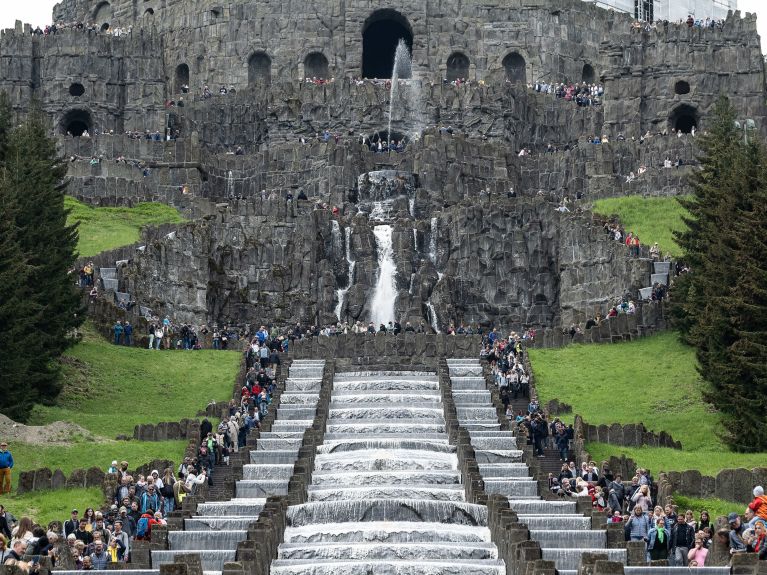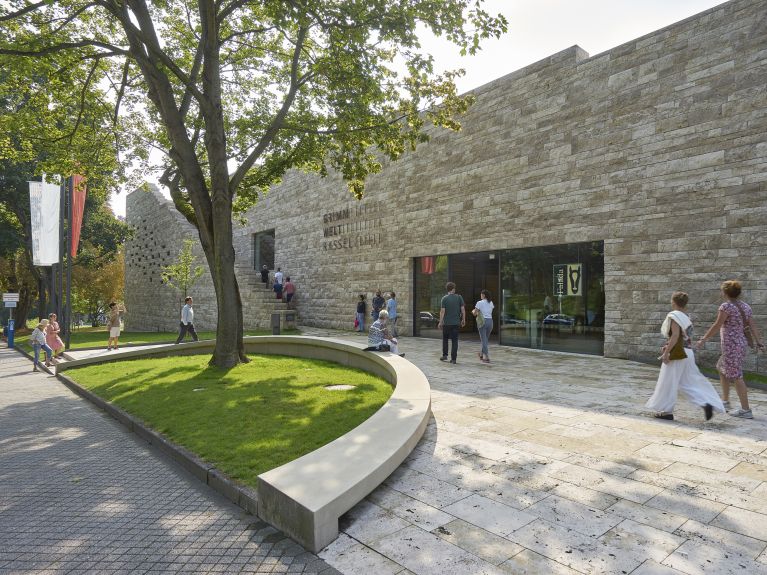Kassel beyond documenta
Kassel owes a great deal to documenta. But the city has much to offer besides the international art exhibition, too. Here are four tips.

Bergpark Wilhelmshöhe
Bergpark Wilhelmshöhe has been a UNESCO World Heritage Site since 2013. Its gigantic water displays are particularly impressive. On Wednesday and Sunday afternoons (and on public holidays) during the summer months, over 750,000 litres of water cascade down the hill – over artificial rocks, steps and aqueducts – to create a fountain more than 50 metres high at the bottom. Other highlights worth seeing in the Bergpark are Schloss Wilhelmshöhe with its Gallery of the Old Masters, the Antiquities Collection and Graphic Arts Collection, and the Löwenburg artificial castle ruins.

Grimmwelt
The brothers Jacob and Wilhelm Grimm are regarded as the founding fathers of German studies. In the 19th century they collected fairy tales from their home country and published them in an anthology entitled “Children’s and Household Tales”. Every child in Germany is familiar with these stories. The Grimmwelt museum is dedicated to their lives and works, presented in a multimedia and artistic exhibition. The most precious exhibits include the handwritten manuscripts of the children’s and household tales – which have meanwhile been included on UNESCO’s Memory of the World Register.

Insel Siebenbergen
Insel Siebenbergen is an artificial island that was created in the Staatspark Karlsaue in 1710. Since the mid-19th century it has been home to a Botanic Garden in which exotic plants and native flowers grow: today there are around 100 different plant species from all over the world. One special feature is the garden’s custom of planting thousands of early bloomers every year, turning the island into a veritable sea of blossoms.

Natural history museum in the Ottoneum
Kassel’s natural history museum reveals how local flora and fauna has changed over the past 400 million years. Animals (including mammoths, cave bears and dinosaurs), landscapes and climatic conditions can be “experienced” in interactive and elaborately designed productions. Built in the Renaissance style, the Ottoneum is Germany’s oldest permanent theatre building.